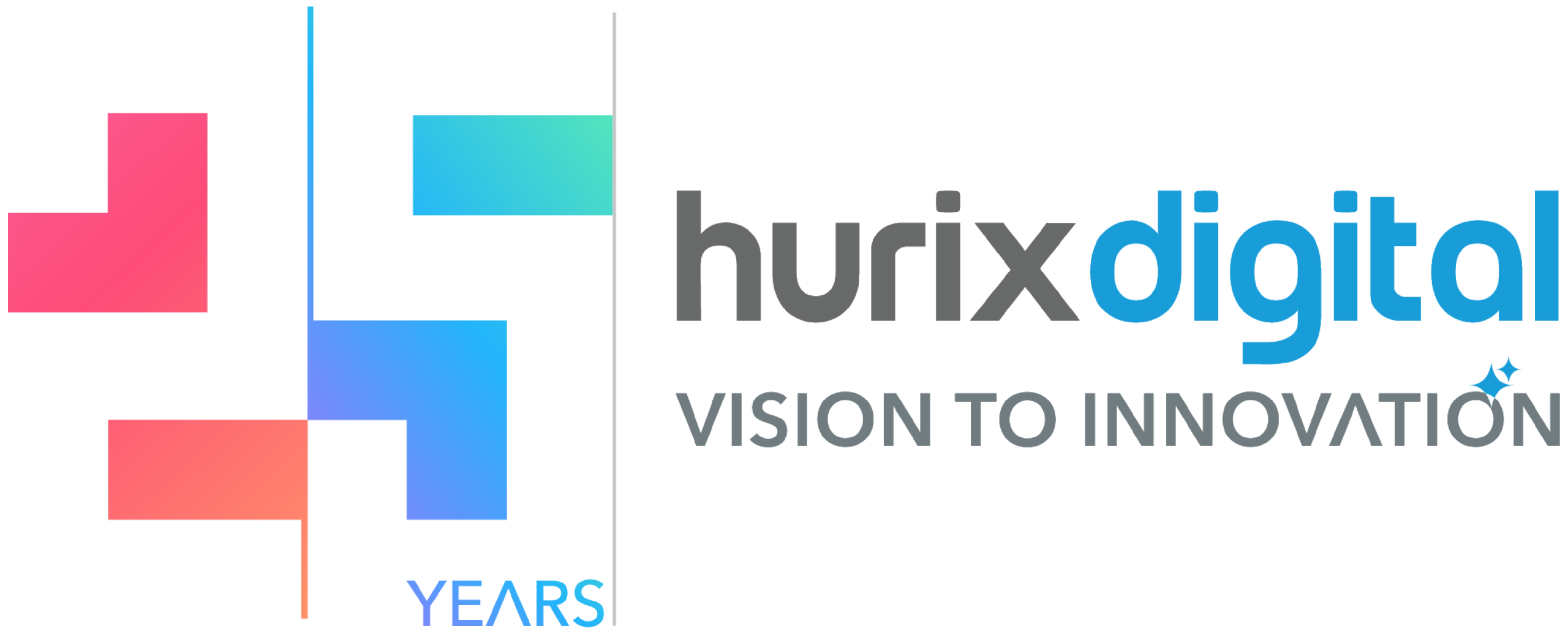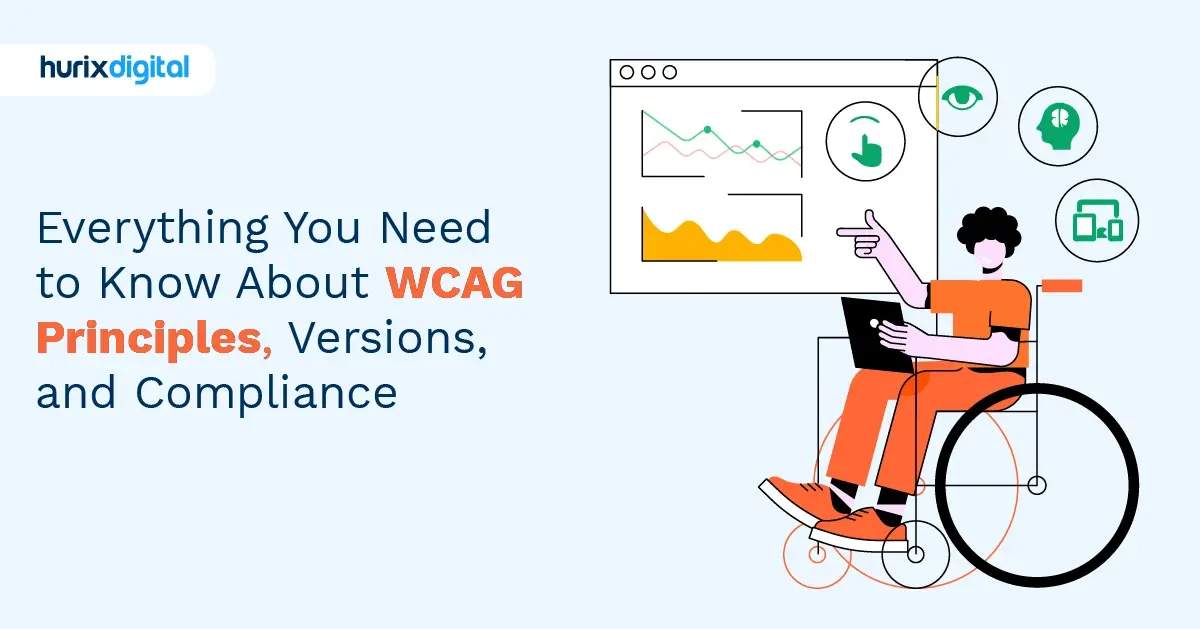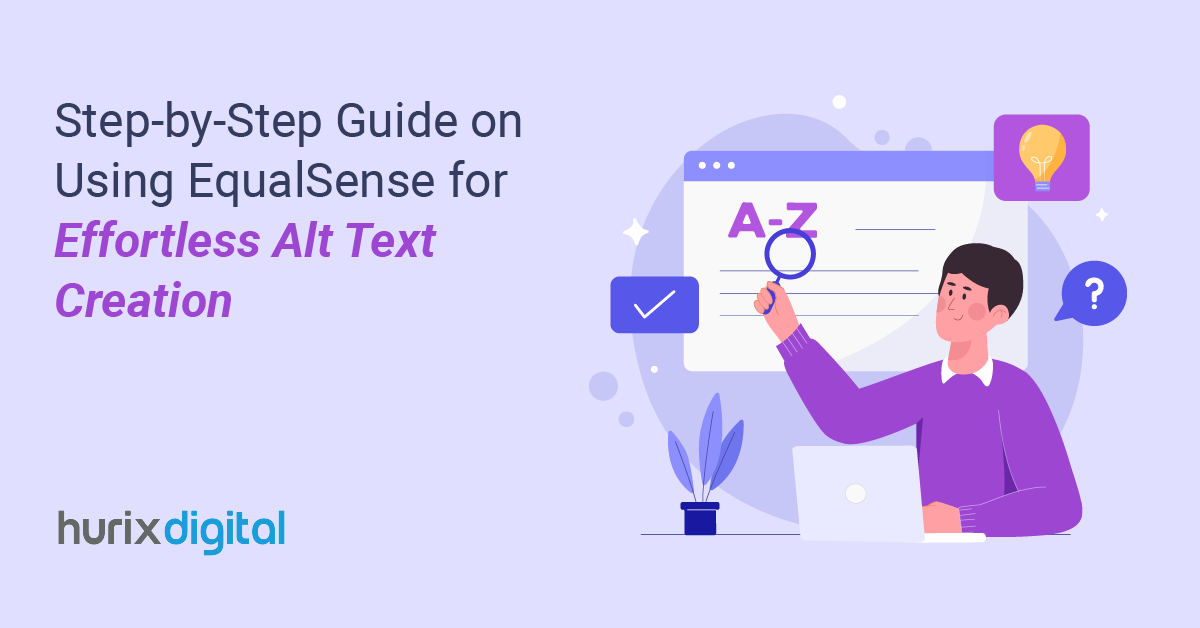
The Future of Healthcare Lies in Accessibility and Better Patient Experiences
The COVID-19 pandemic led to a digital transformation that affected various sectors, including businesses, schools, and government agencies.
The healthcare industry, while heavily burdened by patient surges, sought secure and safe solutions for process management that would also respect patient privacy. As a result, the transition to mobile apps as a means of healthcare services and medical record access has become a path filled with opportunities for fairness and equal access to everyone.
Despite efforts to make healthcare resources accessible, there are still many areas where mobile apps are not available.
There are numerous apps and websites that fail to meet accessibility in healthcare, including Section 508 of the Rehabilitation Act and Section 1557 of the Patient Protection and Affordable Care Act. Although being accessible means more than just meeting the requirements, healthcare institutions are often compelled by court actions to be responsible for digital inclusivity.
In this piece, we discuss the fundamentals of accessibility in healthcare app development, highlighting the importance of inclusive design in ensuring equitable access to essential medical services. Continue reading!
Table of Contents:
- Why is Digital Health Accessibility Important?
- What are the 5 Common Barriers to Accessibility in Healthcare?
- Why Must Healthcare Apps Prioritize Accessibility?
- How to Improve Accessibility in Healthcare?
- How to Design an Accessible Healthcare Application UX Design?
- Accessibility in Healthcare Initiatives That Foster Inclusivity
- Wrapping Up
Why is Digital Health Accessibility Important?
A study by the World Health Organization (WHO) suggests that there are an estimated 1.3 billion people, or around 16% of the total population, living with a disability. These individuals may have color blindness, age-related illnesses, or mobility challenges. Hence, they often face issues when accessing digital products.
Additionally, Deloitte indicates that 10% to 20% of the global population is neurodivergent, implying they have autism, dyslexia, and ADHD.
Unfortunately, disabilities often go hand in hand with health issues. When disabled individuals are excluded from having full access to healthcare assets, it increases the chance of poorer health consequences for those who need assistance the most.
Healthcare establishments, including hospitals, urgent care centers, and clinics, must prioritize accessible healthcare solutions. By presenting content material that is accessible, these facilities ensure that patients with disabilities have an inclusive experience, leading to exceptional care rather than the usual.
Adhering to accessibility guidelines for health apps is essential to ensure that digital healthcare offerings are usable by everyone, irrespective of their abilities. This promise of accessibility promotes equality and enhances accessibility in healthcare, ultimately improving patient outcomes.
Additionally, ensuring digital health accessibility is not only a matter of inclusivity but also a strategic imperative for healthcare providers and organizations. By catering to the diverse needs of individuals with disabilities, healthcare facilities can enhance patient satisfaction, loyalty, and overall outcomes.
What are the 5 Common Barriers to Accessibility in Healthcare?
Ideally, essential healthcare services should be accessible and affordable for all. But unfortunately, many barriers still exist that prevent some individuals, especially those with disabilities, from accessing quality healthcare services.
1. Physical Barriers
Physical barriers can be significant obstacles for people with disabilities to access quality healthcare services. For instance, people in wheelchairs often struggle with steps, narrow doorways, and examination tables that are not adjustable to their height.
Many healthcare facilities lack assistive technologies, such as ramps or lifts, that accommodate the needs of people with mobility impairments.
2. Attitudinal Barriers
Some healthcare professionals have negative attitudes toward patients with particular medical disorders or limitations. They speak patronizingly to patients, viewing them as less capable, believing they have intellectual limitations, or completely underestimating their needs.
Such attitudes on the part of healthcare staff lead patients to experience a lack of respect or empathy.
3. Communication Barriers
Effective communication is critical in health services. But doctors and nursing staff are often not trained to communicate effectively with people with disabilities. This can lead to severe consequences, like misunderstandings, incorrect diagnoses, or inappropriate treatment, among others.
For instance, deaf individuals may overlook crucial information during medical consultations or struggle to understand how to properly administer medication. Similarly, visually impaired people could find reading printed information crucial to their treatment difficult.
4. Financial or Logistical Barriers
The accessibility of healthcare is also affected by logistical and financial constraints. Lack of insurance coverage, restricted access to transportation to reach healthcare facilities, a shortage of clinics, and a scarcity of medical professionals are among the significant financial and logistical obstacles. They prevent patients from accessing medical care in a timely manner.
For instance, approximately 3.6 million Americans are unable to seek medical treatment because they lack access to reliable transportation to the nearest healthcare centers.
5. Lack of Access to Healthcare Information or Technology
Patients with disabilities often face challenges in accessing or understanding health information available on the internet.
For instance, the lack of healthcare information in accessible formats, such as Braille or large print, reduces accessibility for individuals who are blind or visually impaired. Similarly, a lack of access to telehealth solutions prevents patients with logistical barriers from receiving medical care.
Why Must Healthcare Apps Prioritize Accessibility?
Given below are some reasons healthcare apps must prioritize accessibility:
1. Healthcare Accessibility for All
Ensuring equal access to healthcare offerings is important. By making digital content materials available, healthcare providers ensure that individuals with disabilities can access clinical records, communicate easily with their healthcare providers, and utilize digital health apps to manage their health effectively.
2. Improved User Experience
Digital accessibility performs a crucial function in enhancing patient experiences. It enables individuals with disabilities to access critical health information and resources.
For example, captioned videos and audio transcripts benefit individuals with listening impairments. Similarly, screen readers and alternative text descriptions can help those with visual impairments.
3. Meeting Legal and Regulatory Requirements
Healthcare companies must comply with legal standards. Two notable guidelines are the Americans with Disabilities Act (ADA) and the Web Content Accessibility Guidelines (WCAG).
Failure to meet these standards can result in legal and financial repercussions, as well as damage a healthcare company’s reputation.
4. Improved Patient Satisfaction
Improved patient satisfaction is guaranteed when healthcare apps are easily accessible and user-friendly.
For example, telemedicine allows individuals with mobility impairments to receive hospital treatment at home. This eliminates the need for special transportation or physical accommodations. This enhances the overall patient experience.
5. Ethical Responsibility
Lastly, hospitals and healthcare institutions have an ethical duty to add digital accessibility to their services. By ensuring their apps and web platforms are accessible to all, they follow the principles of equality and fairness in delivering healthcare.
Being ethically responsible means recognizing that disabled individuals have the same rights to healthcare resources as those without disabilities.
When hospitals and health technology companies fail to prioritize digital accessibility, it can result in exclusion and discrimination. This goes against the ethical standards of healthcare equity and inclusivity.
Hence, healthcare providers are ethically obligated to ensure that their digital services are accessible to everyone, regardless of their abilities.
How to Improve Accessibility in Healthcare?
It is important to address and eliminate the above accessibility barriers so everyone has fair access to healthcare services. Here are some steps you can take to make the healthcare sector more inclusive:
1. Conduct An Accessibility Assessment
Conducting an accessibility audit of the facility is the first step to enhancing accessibility in healthcare. This will make it easier to identify any physical or attitudinal obstacles that hinder people from accessing quality healthcare.
It is crucial to include people with disabilities in the assessment process to fully comprehend their unique requirements and challenges.
2. Provide Healthcare Compliance Training
Healthcare compliance training can be an effective tool for medical staff to understand their legal obligation to provide accessible care. The training can cover topics related to the country’s disability act, effective communication techniques, and disability etiquette.
They can help improve the quality of medical services and reduce lawsuits resulting from inaccessible facilities or improper attitudes toward patients with disabilities. Studies also suggest that training healthcare personnel can facilitate better patient communication and help eliminate attitudinal barriers.
3. Offer Simulation Training For Healthcare Professionals
Another training that can prove beneficial for healthcare providers is simulation training, which enables them to understand the experiences of patients with disabilities and empathize with them.
The training exposes healthcare professionals to different realistic scenarios involving patients with disabilities, thus providing a deeper understanding of their needs and challenges.
This way, they can develop more patient-centric strategies to overcome these challenges and improve accessibility.
4. Implement Technology Solutions
Technology solutions are making healthcare accessible and affordable in many ways. For instance, individuals living in rural areas can utilize telehealth services for remote consultations, thereby eliminating the need to travel long distances to reach the nearest clinic.
A study by the National Institutes of Health backs this point. It suggests that telemedicine services can improve healthcare access for individuals living in rural or remote areas.
Similarly, assistive technologies, such as mobility aids, electronic health records, voice-activated technologies, and captioning services, can make health education and services more accessible to patients with disabilities.
5. Expand Medical Coverage
Expansion of health insurance coverage through employer sponsorship can benefit individuals who might otherwise lack access to affordable healthcare services due to financial limitations.
Similarly, government initiatives such as financial assistance programs and community health centers can make healthcare services more affordable for low-income households.
6. Incorporate Gamification into Healthcare
Finally, health centers can also utilize gamification to enhance healthcare accessibility. By incorporating game-like elements, such as points, rewards, and competition, into healthcare apps and programs, healthcare centers can encourage patients to actively participate in preventive health practices.
Such gamified education can be presented in various formats, like audio or video, to accommodate the needs of differently-abled individuals. The availability of different formats can improve health outcomes for all and enable patients with disabilities to effectively manage chronic illnesses.
How to Design an Accessible Healthcare Application UX Design?
It is crucial to develop an accessible healthcare user experience (UX) to ensure that all individuals, regardless of ability, can utilize, comprehend, and benefit from digital healthcare services.
The most effective way to get started is by complying with accessibility standards for healthcare apps. Here are some effective strategies to achieve the best possible outcomes:
1. Embracing the Principles of Universal Design
The tenets of inclusive design center on making surroundings, solutions, and goods simpler to use regardless of users’ conditions or skills. In terms of the healthcare user experience, this means developing digital health systems that are easy to use, understandable, and accessible to the largest number of users.
Mobile health app accessibility can be significantly improved by incorporating multiple navigation methods, including touch, spoken instructions, mouse interactions, and typing inputs. This ensures that users of various skill levels can interact efficiently with the application.
2. Abiding by the Web Content Accessibility Guidelines (WCAG)
Organizations can benefit from WCAG by offering digital accessibility to healthcare technology. Detailed instructions for designing accessible and intuitive digital user interfaces can be found in these guidelines.
They also offer helpful instructions, such as ensuring text descriptions are included for nontextual content and allowing full keyboard features. By adhering to these guidelines, you can create adaptive content that displays well across a range of formats without compromising data integrity.
For example, text-to-speech technology enables users to read screen text more easily and simplifies app navigation. To enable text-to-speech software to explain the website’s visuals, icons, and other visual components, healthcare apps and websites must adhere to the WCAG principle of offering text alternatives for nontextual content.
3. Providing User Evaluations and Responding to Input
Evaluating the accessibility of a healthcare application is an ongoing process integrated into its development phases and updates, rather than a one-time endeavor.
By implementing routine evaluations of healthcare services, the team can ensure that accessibility standards are upheld or even exceeded as the application develops.
You can enhance the user experience and demonstrate your commitment to accessibility guidelines for healthcare applications by routinely soliciting user feedback and promptly addressing any issues. For instance, you must test an application on a range of users, including people with disabilities, to garner various accessibility-related comments.
Accessibility in Healthcare Initiatives That Foster Inclusivity
To ensure healthcare web accessibility for the maximum number of individuals with disabilities, it’s essential to understand how to make healthcare services accessible. Here are some tips:
1. Incorporate Assistive Technology
Integrating assistive technology into healthcare services can help patients perform better. This technology can enhance the user experience of touch-screen cellphones, typing, and reading screens.
Users can easily access test results, check service details, and schedule appointments when it is integrated with healthcare websites and apps.
2. Include Various App Accessibility Enhancements
Look into the audit report and implement necessary changes to ensure your websites and platforms are accessible to everyone. It may include adding alt text for photos, incorporating video captions, and improving navigation.
You can also provide visual formats, such as charts, audio descriptions, graphic layouts, and other diagrams, for individuals with disabilities who require web accessibility.
3. Conduct Tests of Healthcare Apps Before Official Rollout
Test your healthcare app with individuals with disabilities before launch. Including people with different challenges in the test phases for all digital tools, like applications, platforms, and websites, can help uncover potential issues and provide valuable feedback.
4. Hire Web Accessibility Experts
Organize a group of specialists in online accessibility to guarantee adherence to ADA regulations and other guidelines. This group can digitize materials and convert them into various formats, allowing people with disabilities to access them.
5. Increase Awareness within the Institution
You can empower your staff with awareness and training on assistive technology. Providing accessibility training can help them assist patients better.
Let your staff experience firsthand how inaccessible the platform is for users before implementing the changes.
You can distribute videos showing the challenges faced by users. You can encourage developers and designers to use screen-reading tools while wearing blindfolds to better understand accessibility issues.
Additionally, healthcare institutions must proactively make key changes in response to legal and technological advancements.
Wrapping Up
Elderly people who live distant from medical facilities can benefit from accessibility in healthcare that extends beyond physical locations. Access to these treatments is significantly influenced by factors such as remote access, a lower risk of infection, and prompt medical advice.
It could seem difficult to start on the path towards making digital healthcare accessible. But getting started with these basic practices might be beneficial. By upholding digital accessibility, you may reduce care gaps, encourage inclusivity, and improve service accessibility.
Hurix Digital is a digital content solution provider that may aid your organization if it requires support with inclusivity and accessibility criteria.
Through specialized software development and healthcare eLearning services, we are a leader in offering products for accessibility in healthcare. Contact us to expand your audience for medical services.

Senior Vice President
A Business Development professional with >20 years of experience with strong capability to sell new solutions and develop new markets from scratch. New Market Entry Specialist with experience working in the largest emerging markets. Exceptional experience in conceptualizing, ideating and selling new learning technologies like VR AR, etc. across multiple industry verticals.
 A Space for Thoughtful
A Space for Thoughtful 



